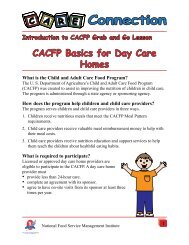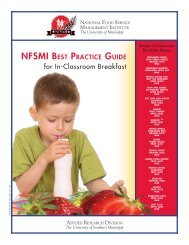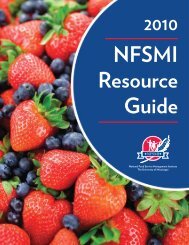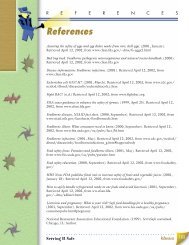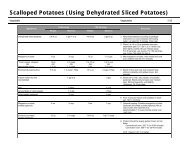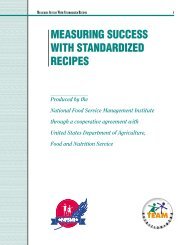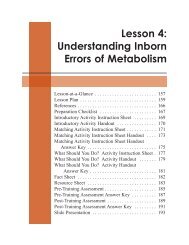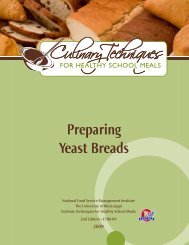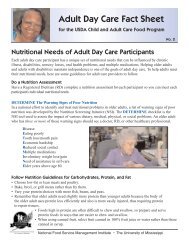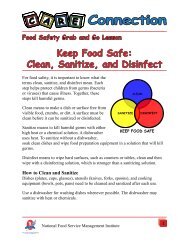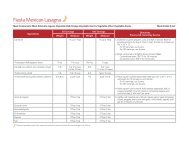financial management information system - National Food Service ...
financial management information system - National Food Service ...
financial management information system - National Food Service ...
Create successful ePaper yourself
Turn your PDF publications into a flip-book with our unique Google optimized e-Paper software.
F INANCIAL A NALYSIS AND P ROGRAM E VALUATION S ECTION 4<strong>Food</strong> Cost PercentageSchool foodservice administrators often rely on this ratio to determine whether expenditures for purchased food arereasonable and in-line with previously established guidelines. Because most of the revenue in school foodservice programscomes from the sale of food, the food cost percentage is generally calculated using the ratio of food cost to total revenue.The results are then compared to established or budgeted goals. The food cost percentage can be calculated using thefollowing formula:<strong>Food</strong> Cost Percentage = Cost of Purchased <strong>Food</strong>Total RevenueExample: A school foodservice program had total revenue of $30,000 for the month of February and a food cost of$16,500 for the same month. Using the formula above, we can see that this operation had a 55% food cost in relation tototal revenue for the month. This tells the school foodservice administrator that $.55 of every revenue dollar was spentfor food in the month of February.$16,500$30,000= .55 x 100 or 55%The school foodservice administrator planned to maintain a 38-40% average for purchased food cost throughout the year. A55% food cost signals that the goal is not being met and the reason for the higher food cost must be investigated. Trackingthe food cost to a revenue ratio on a weekly or monthly basis can identify trends and pinpoint potential problems.Variances may be due to:• poor portion control• overproduction and waste of food• inaccurate inventories when food cost is based on food used rather than food received• theft• unexpected increases in the price of food productsConsideration should also be given to revenue records. Inaccurate revenue reports caused by reporting errors can distort theratio of costs to total revenue.A lower than expected food cost also should be investigated. While it may mean cost control methods are working betterthan expected, it also could mean:• inaccurate inventories• inaccurate reporting of food expenditures• food portions smaller than requirements are being served• some meal components are not prepared in sufficient quantities for all studentsThere may be a need to adjust the target food cost percentage if the district combines purchased food used with the value ofcommodities. School foodservice administrators should seek advice from their state agency regarding food cost percentagesthat include USDA-donated commodity values. Using food cost percentages for external benchmarking from state to statemay be difficult due to the differences in methods used to inventory purchased food and commodities.71N ATIONAL F OOD S ERVICE M ANAGEMENT I NSTITUTE



